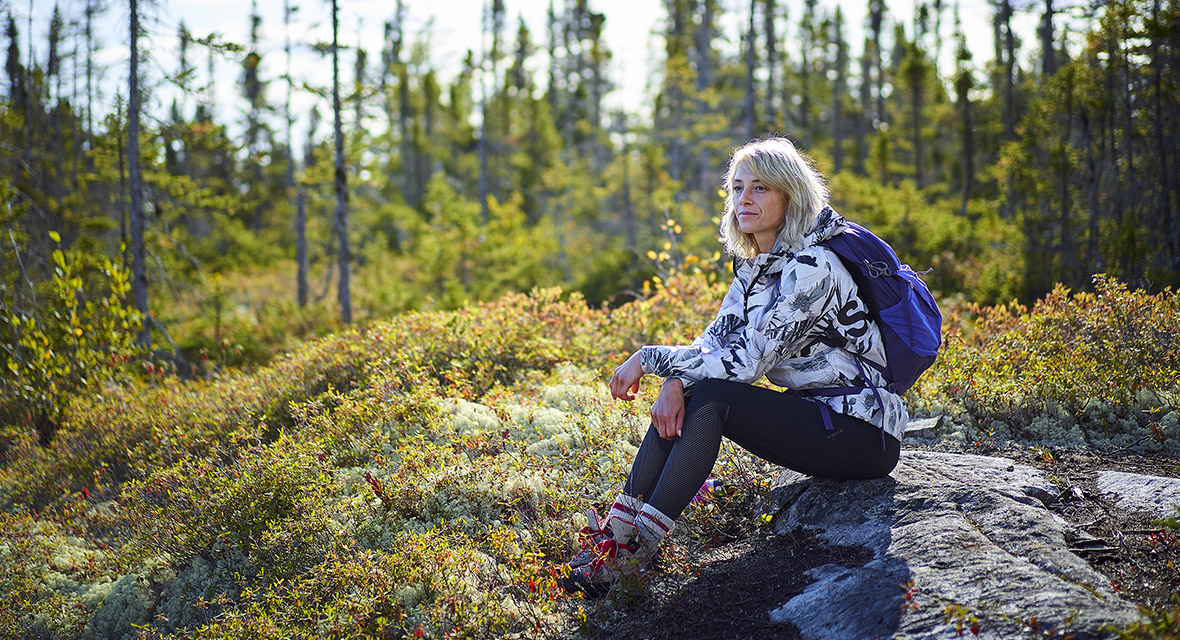Forest bathing: a brief guide to outdoor meditation
By Geneviève Gignac - Digital content creator, yoga teacher and massage therapist. Mother of a little Eloise, and mother-in-law of three little rascals.
No need to undress to bathe ... in the forest! In the summer as well as in the winter, our woodlands, mountains and wide-open spaces are the perfect places to meditate. Being surrounded by trees soothes the body and mind — it's proven! It's time to let go of the meditation cushion and say goodbye to your instructor on Zoom. Here are five tips to get to your inner self and feel the incredible power of the forest.
A proven therapy, part art, part science
Forest bathing is not a concept for the enlightened, but a popular therapy in Japan since the early 80s. The practice, known as shinrin yoku or sylvotherapy, consists of a very slow nature walk, interspersed with breaks. You venture into the woods as discreetly as an ant. Far from being a sporting activity, it is more of a contemplative approach.
We can all benefit from it. Dr. Qing Li, a medical immunologist at the University of Tokyo, asserts that a simple two-hour getaway induces a state of relaxation, relieves our tensions and clarifies our thoughts. According to the author of Shinrin Yoku: The Art and Science of Forest Bathing, “Being in nature can improve your mood, boost your energy and vitality, refresh and rejuvenate you.”
By breathing in phytoncides - molecules released into the air by plants as a defence strategy against bacteria or fungi - you stimulate your immune system and your stress hormones drop.
Where to begin?
1. Choose a place where there are trees
Ideally, you can neither see nor hear the cars. Whether you are in a garden, a park, a path in the mountains or along a river, take the time to immerse yourself in nature, from a few minutes to a few hours. Let your body and your intuition guide you. Do you feel like lying down under that big pine tree? Go ahead. Some places may become berths, where you'll return to often, regardless of the season or weather.
2. Disconnect yourself from any distractions
Phone, camera, music, watch: leave everything behind. The goal is to disconnect yourself from the imperatives of everyday life. Allow yourself to wander around without a precise objective, without a destination.
3. Breathe, breathe and breathe again!
Walking in the forest slows down our breathing. Take advantage of this opportunity to smell and absorb the natural scents of the woods. Inhale and exhale deeply, without strain. Abdominal breathing, where the diaphragm moves freely, promotes better digestion and oxygenation.
4. Awakening the senses
Let your five senses guide you: listen to the wind in the branches, observe the chipmunks, smell the scents of the plants, taste the rain, caress the moss, sit between the roots of a majestic maple tree... Be on the lookout and the forest will reveal its secrets.
5. Walk barefoot
If conditions are appropriate, remove your shoes and free your feet. Roll your toes in the dirt, dip them in the stream. Did you know that walking barefoot improves the proprioception of ankle tendons and develops your sensory receptors?
In a few hours, the trees will have worked their magic. A real reconnection begins. Walking in the woods aimlessly and in silence ... what a luxury in this fast-paced age of networks and technology! Have you taken your daily forest bath?












